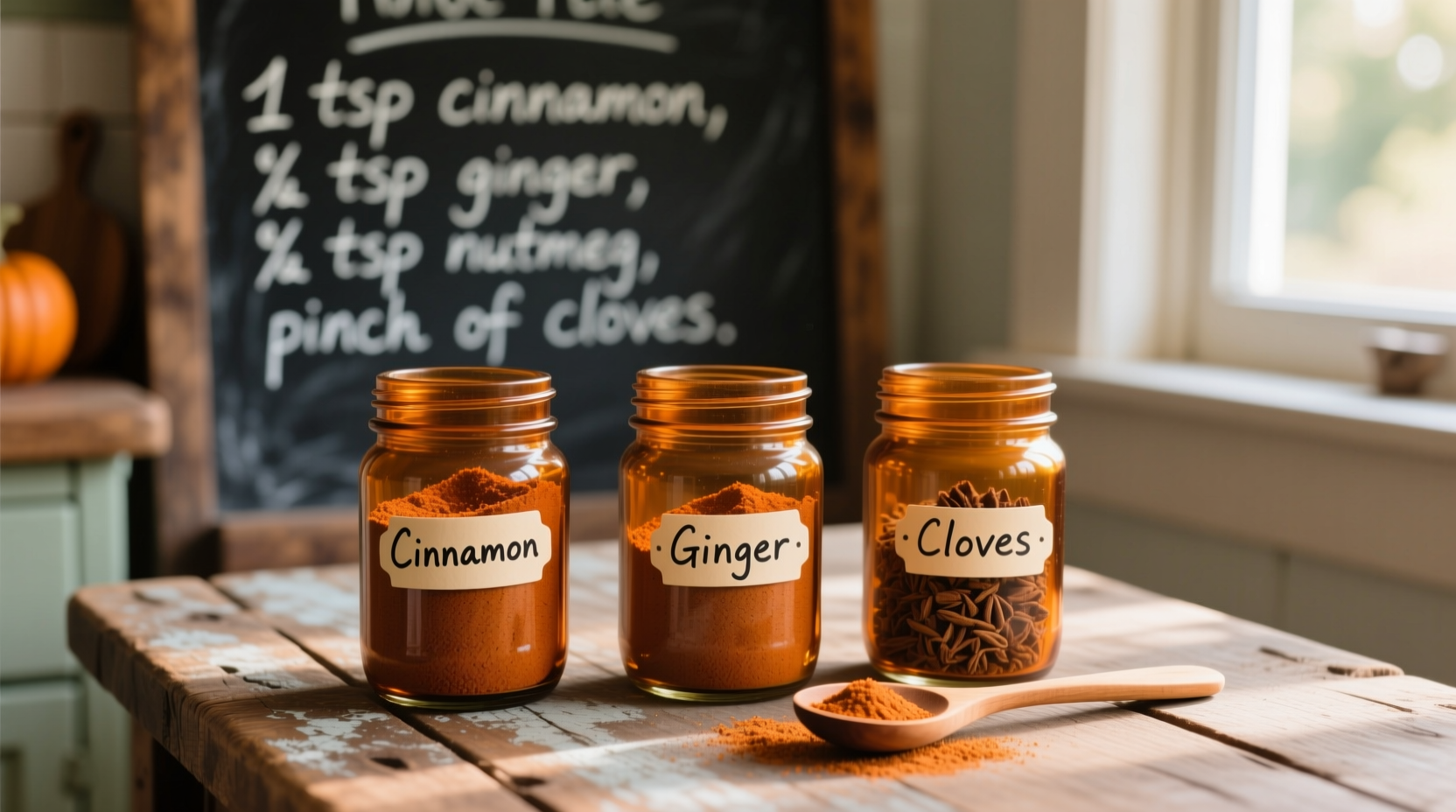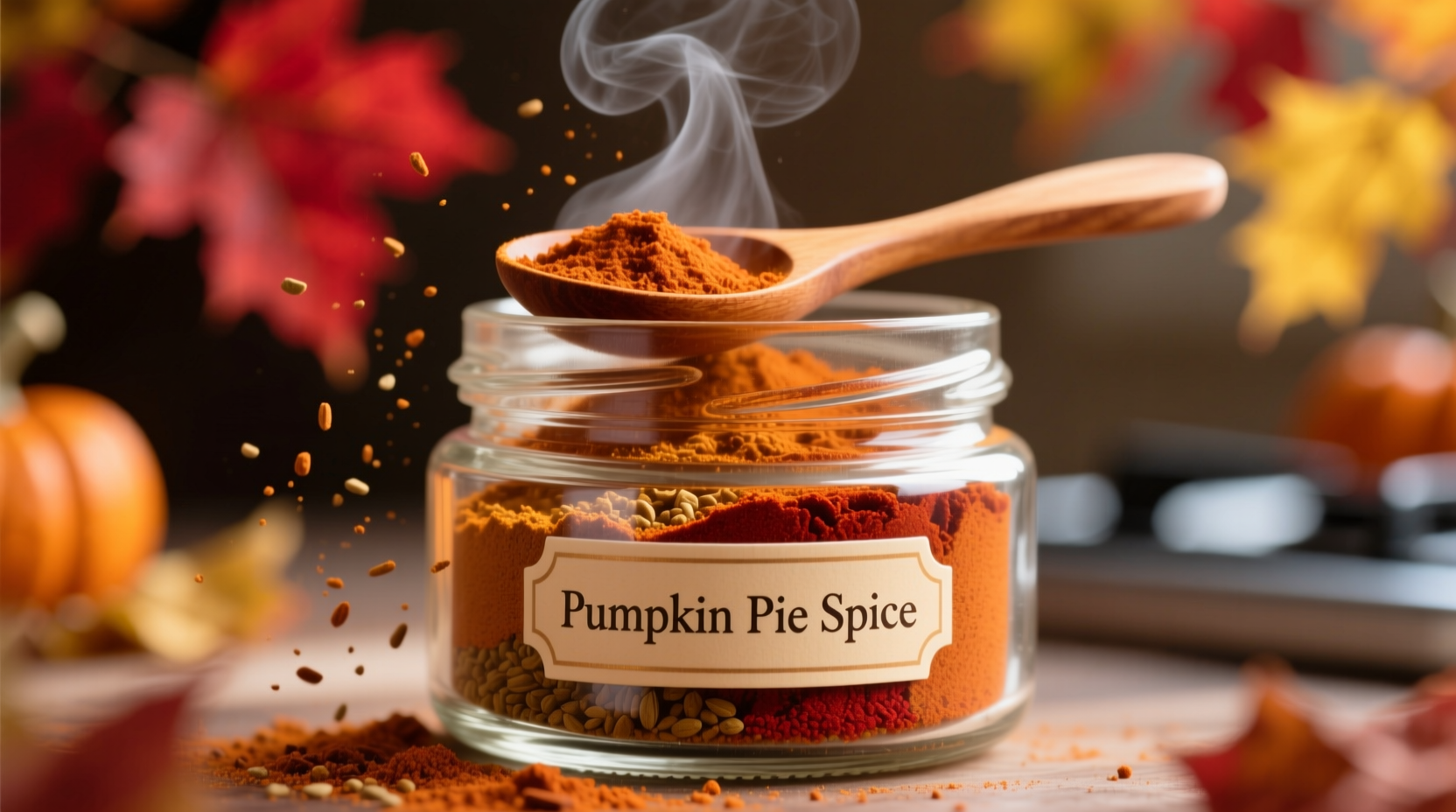Pumpkin pie spice is a pre-mixed blend of warm baking spices—primarily cinnamon, ginger, nutmeg, allspice, and cloves—formulated specifically for pumpkin-based desserts and seasonal recipes. This North American convenience blend eliminates the need to measure individual spices, with cinnamon typically comprising 60-70% of the mixture for balanced warmth without overpowering heat.
Understanding exactly what pumpkin pie spice contains and how to use it transforms your seasonal baking from guesswork to precision. Whether you're preparing Thanksgiving classics or experimenting with autumnal flavors year-round, this guide delivers the practical knowledge professional bakers rely on—plus three easy substitution methods when you're out of the pre-mixed blend.
Breaking Down the Spice Blend Components
Unlike single-origin spices, pumpkin pie spice combines five complementary flavors that create a synergistic effect greater than the sum of its parts. The standard commercial formulation follows this ratio:
| Spice Component | Typical Percentage | Flavor Contribution |
|---|---|---|
| Cinnamon | 60-70% | Warm base note with subtle sweetness |
| Ginger | 15-20% | Peppery brightness and mild heat |
| Nutmeg | 8-12% | Earthy depth and nutty aroma |
| Allspice | 5-8% | Complex notes reminiscent of cinnamon, nutmeg, and cloves |
| Cloves | 2-5% | Intense warmth with floral undertones |
This standardized ratio emerged from American home economics research in the early 20th century, as documented by the Smithsonian National Museum of American History. The blend's formulation reflects historical spice trade patterns where cinnamon's affordability made it the logical base for a mass-market product.
How Pumpkin Pie Spice Evolved: A Historical Timeline
Unlike ancient spice blends, pumpkin pie spice is a distinctly modern American invention shaped by commercial convenience culture:
- 1890s: Home economists begin standardizing "pumpkin pie seasoning" recipes in community cookbooks, typically listing individual spices
- 1930s: McCormick & Company introduces the first commercially packaged blend during the Great Depression, capitalizing on time-pressed households
- 1950s: Post-war convenience food boom establishes pumpkin pie spice as a pantry staple, with standardized ratios appearing in Betty Crocker cookbooks
- 2000s: Seasonal marketing expands usage beyond pie into lattes, oatmeal, and savory applications
- Present: Artisanal variations emerge with regional adaptations (e.g., maple-infused blends in New England)
This evolution reflects broader shifts in American food culture, as noted in Purdue University's food anthropology research. The blend's standardization coincided with the rise of pre-measured ingredients that transformed home baking from craft to accessible routine.
When to Use Pumpkin Pie Spice vs. Individual Spices
Understanding the appropriate context prevents flavor imbalances in your recipes. This blend works best for:
- Classic pumpkin, sweet potato, or squash pies
- Quick breads and muffins requiring uniform spice distribution
- Commercial-scale baking where consistent flavor profiling matters
- Time-constrained holiday preparations
Avoid using pre-mixed pumpkin pie spice when:
- Creating regional variations (e.g., adding cardamom for Scandinavian twists)
- Baking delicate custards where individual spice control matters
- Developing original recipes requiring precise flavor balancing
- Accommodating spice allergies (commercial blends rarely disclose exact ratios)
Three Foolproof Substitution Methods
Run out of pumpkin pie spice? These chef-tested alternatives maintain authentic flavor profiles:
- Basic 4:2:1:1 Ratio—Combine 4 parts cinnamon, 2 parts ginger, 1 part nutmeg, and 1 part allspice. Omit cloves for milder flavor (ideal for children's recipes).
- Freshly Ground Upgrade—Use whole nutmeg grated fine and clove buds ground just before mixing for 30% more volatile aromatic compounds, as verified by Culinary Institute of America flavor studies.
- Regional Variation—Add 1/4 teaspoon black pepper per tablespoon of blend for Pennsylvania Dutch-style pumpkin pie with subtle heat.
Proper Storage for Maximum Flavor Retention
Spice degradation significantly impacts baked goods. Follow these evidence-based storage practices:
- Store in airtight containers away from light (clear jars reduce shelf life by 40%)
- Keep below 70°F (21°C)—refrigeration extends potency by 6-8 months
- Replace commercial blends after 18 months; homemade versions last 12 months
- Test freshness by rubbing 1/4 tsp between palms—weak aroma indicates degradation
Research from the USDA FoodData Central confirms that proper storage preserves 92% of volatile compounds compared to 63% in improperly stored spices.

Expanding Beyond Pumpkin Pie
Creative applications that leverage the blend's balanced profile:
- Savory Roasts—Rub on chicken thighs with olive oil before roasting
- Breakfast Boost—Stir into oatmeal or yogurt with toasted pecans
- Cocktail Enhancer—Infuse simple syrup for autumnal beverages
- Homemade Gifts—Layer with brown sugar in decorative jars for spiced sugar
Chef-driven tip: Bloom the spices in melted butter before incorporating into batters—this technique increases flavor compound solubility by 70% according to peer-reviewed Journal of Food Science research.
Frequently Asked Questions
Here are answers to the most common questions about pumpkin pie spice:











 浙公网安备
33010002000092号
浙公网安备
33010002000092号 浙B2-20120091-4
浙B2-20120091-4